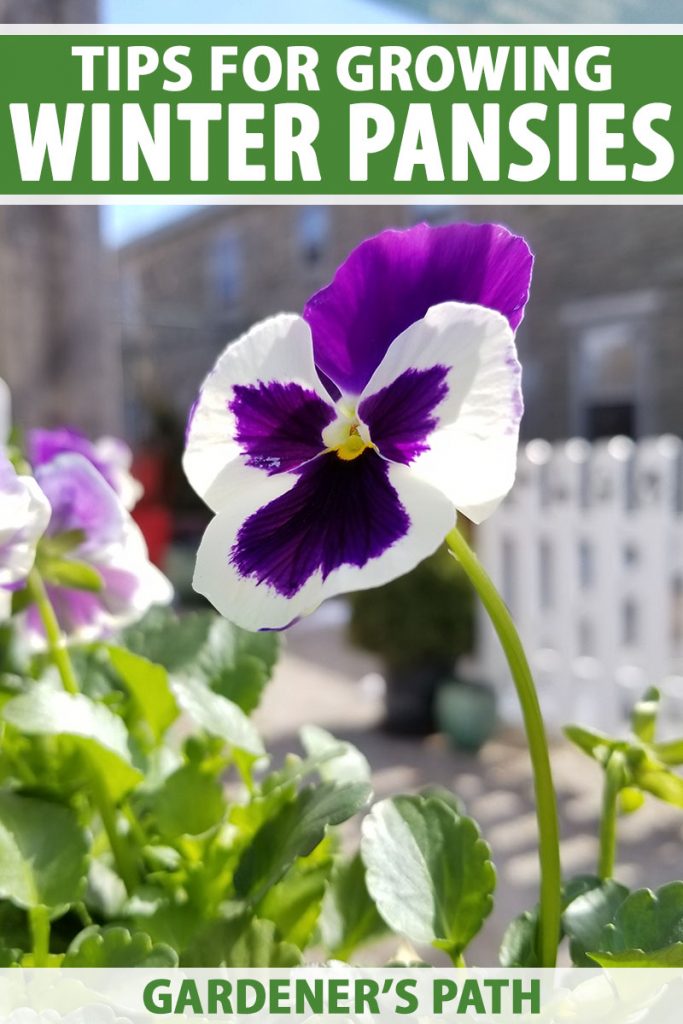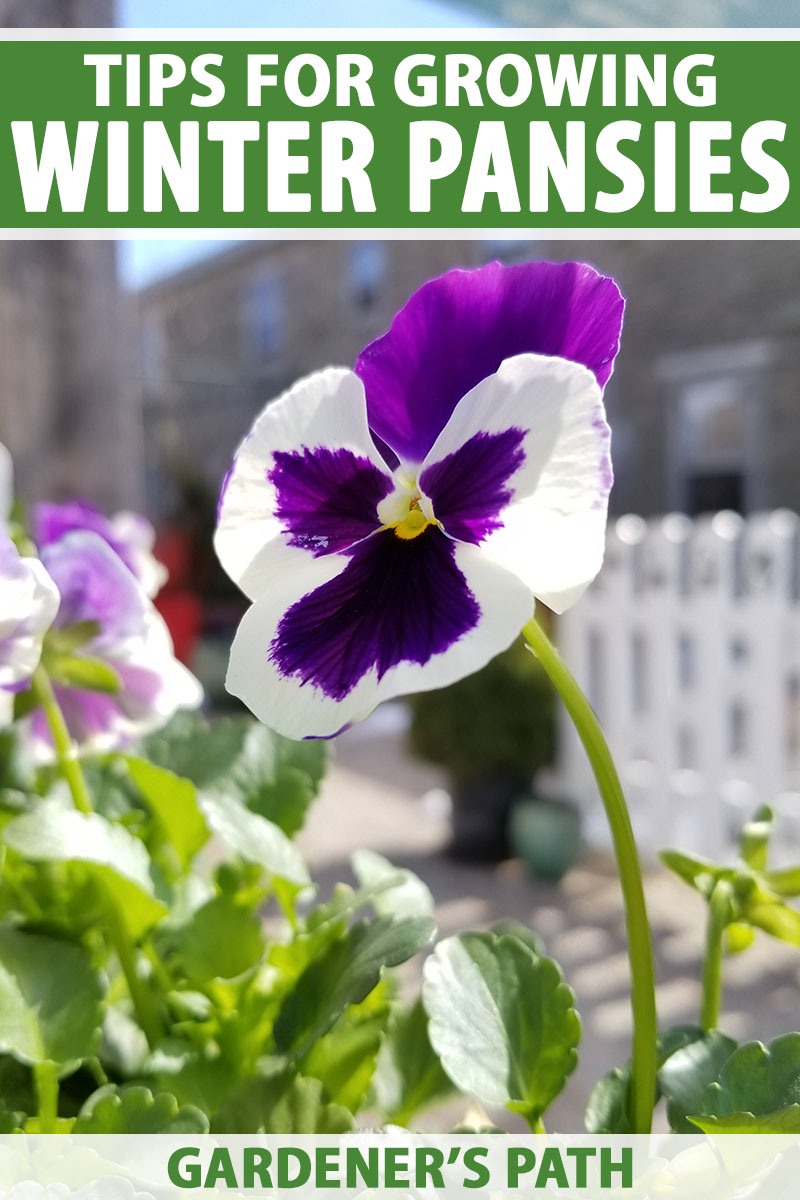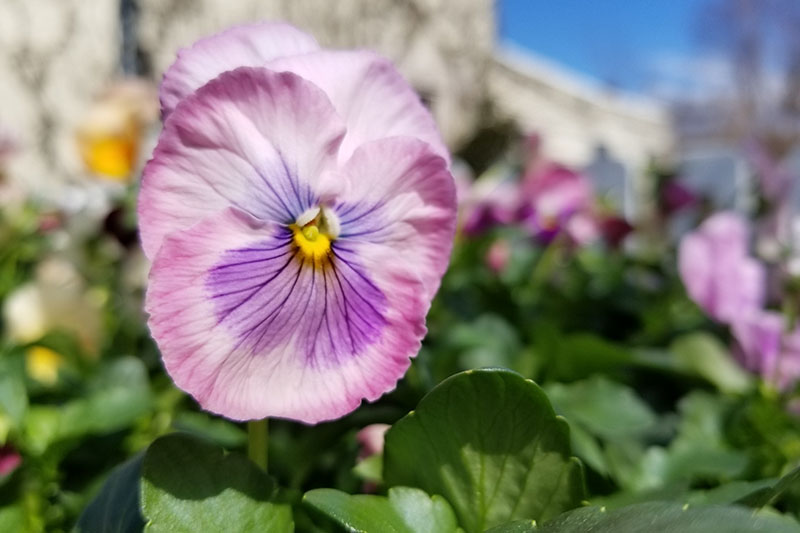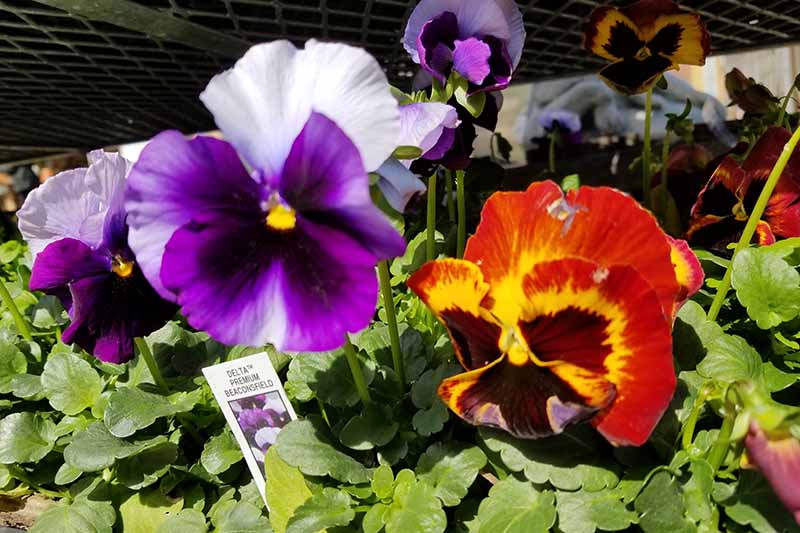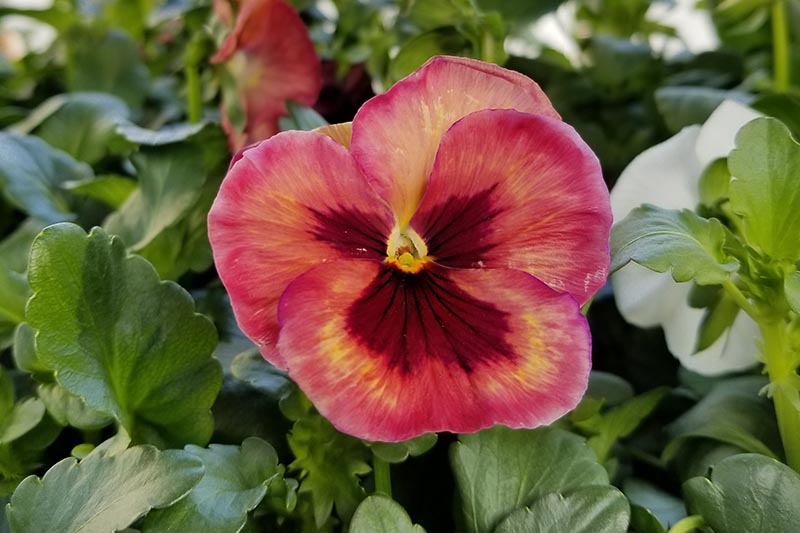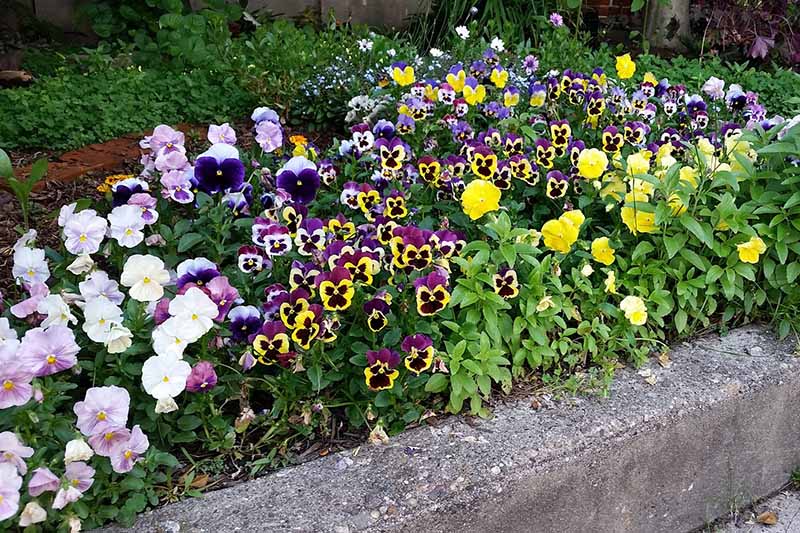It’s the unexpected surprise and joy upon spotting those splashes of intense and wild color that feeds this affection. With few exceptions, winter pansies are numero uno on my spring flowers list. We link to vendors to help you find relevant products. If you buy from one of our links, we may earn a commission. Be sure to check out our guide to growing pansies for complete cultivation instructions, but here I’ll share my tips for growing V. hiemalis. Let’s get to it!
What Are Winter Pansies?
Winter pansies, V. heimalis, are one of over 500 species in the genus Viola, part of the Violaceae family. Common species you may be familiar with include V. tricolor and V x wittrockiana hybrids. The main difference between popular garden pansies and V. heimalis is simply its tolerance of cold weather. In fact, “hiemalis” refers to wintertime in Latin, so their botanical name is certainly fitting. They are also known as winter flowering or ice pansies. This species is low-growing, with slightly smaller flowers than that of the larger-blooming hybrid cultivars. They are available in a variety of colors including white, pink, red, and bicolored types. Most pansy varieties prefer cooler temperatures, but V. heimalis thrives in them. In fact, once daytime temperatures begin to rise to about 60°F, they tend to suffer. With ample luck, afternoon shade, and plenty of water, you could extend your winter pansy growing season up through the fourth of July, but that’s not common. When the mercury climbs, these lovelies shrivel up into nothingness – unless they’re doted on. If you plant V. heimalis in the autumn, you can expect these puppies to bloom in the fall, again during the mild periods of the winter, and then to put on one heckuva show in the spring. Anything beyond that is due to simple luck and lots of care. You can read more about pansy bloom times here.
Prime Weather
Winter pansies will grow in most climates, but they find their sweet spot in regions that have mild winters and cool spring temperatures. Think USDA Hardiness Zones 4 to 7-ish. I say “7-ish” because these peppy flowers are capable of surprising even the seasoned gardener by blooming in both cooler and warmer climates. The ideal soil temperature should be between 45 and 65°F for V. heimalis to do their thing. Anything cooler and they’ll “shut off” and become dormant, but higher temperatures mean they’ll suffer a fair bit. Premium Compost or Soil Thermometer with 20″ Stainless Steel Stem To determine the temperature of your soil, I recommend you purchase a soil thermometer. It can do double duty as a compost thermometer as well. To use, push the thermometer into the soil to a depth of at least six inches and wait for the temperature gauge to hold steady. Boom, there’s your soil temperature. Measuring your soil temperature isn’t a necessity – if you’re like me and favor the laissez faire approach to the outdoors, simply hold off on planting until the days are pleasant and the nights are cool. The ideal time to transplant these flowers is in September or October in most regions. This gives them a good chance to take root, and exposure to some cold weather over the winter months seems to provide the best looking plants in spring.
Getting Started
Starting these flowers from seed takes time, as they can take up to three weeks to germinate, but it’s a doable endeavor. Generally, plants for setting out in spring need to be started indoors from seed about 10 weeks before the last frost date in your area. For a fall planting, you can start seeds in mid to late summer, ready to transplant in September or October. If you are shopping for transplants, local independent garden centers will often have the best choices for your region. You’ll probably see a huge variety available, but there is only one true winter variety, and it’s the V. hiemalis species, sometimes called “ice” or “icicle.” Others, like cultivars in the Delta™ series, can also thrive in the cold months, but they are actually V. x wittrockiana. With flowers like V. heimalis, we want to select a plant with a strong root system and healthy growth. Unless you’re a fan of rehabilitating plants, purchase flowers with healthy green growth and lots of buds that are ready to burst into flower. The bigger the container, the stronger the roots, and the stronger the roots, the better the plant will adapt to your garden! Keep your eye out in the fall for retailers selling V. heimalis. Remember, September and October are the ideal times of year for planting V. heimalis.
How to Grow
Winter pansies require organically-rich, well-draining soil and a full sun location. Set out your transplants six to 10 inches apart to maintain adequate airflow. While many plants don’t require irrigation in the cold weather, you might need to water your V. heimalis in the winter. During occasional warm spells, they’ll pop up and start doing their thing so you’ll need to make sure they don’t dry out. Plants lose water through transpiration. Whenever they’re actively growing, they’re actively losing water, so these plants need a drink in the cool weather as much as they might in the spring. However, you won’t need to give them a drop unless you’re experiencing a warm period and there’s no snow melt to help them out. If there’s snow on the ground, V. heimalis is probably doing just fine how it is. Watch for gray-green foliage in cold weather – if the plant starts to droop, it’s time to water! Keep the soil moist, but not waterlogged, and remember that containers dry out more quickly than garden soil, to keep a close eye on your potted plants. Even though technically a perennial, the winter pansy is a short-lived one. This means that fertilizers need to be of the “shoot first and ask questions later” persuasion. J R Peters Jacks Classic No.4 20-20-20 All Purpose Fertilizer If you want something that will more directly encourage awesome blooming, try Blossom Bloomer instead. J R Peters Jacks Classic No.4 10-30-20 Blossom Booster Fertilizer
Routine Maintenance
V. heimalis don’t need regular maintenance, but they’ll look like they’re showroom quality if you provide it. Deadheading is crucial to ensuring better blooms. It can be a tedious process, but it promises longer lasting and more abundant flowers. The task can be accomplished with a small pair of shears, or a simple pluck with your finger and thumb. Removing browned-out and dead foliage is beneficial as well. If your plants start to get leggy (the gardener’s go-to word for long and stretched-out, floppy plants), cut them back by about 1/3 of their height and they’ll reward your efforts with a fuller form. Or why not grab a packet of seeds and start your own? Kings Seeds – Pansy Winter Flowering Mixed – 100 Seeds
Now, Get Planting!
Give it a shot! Winter pansies are awesome in the garden or in a container. They demand little, but thrive with a bit of love and attention. Don’t forget other springtime bloomers like columbine, crocus, and daffodils.
As long as your V. heimalis plants aren’t treated with pesticides and other potentially toxic substances, you can even add them to your cooking for a colorful accent! Get out there now and grab yourself some lovely winter pansies to add color to your late-season garden. We’d love to hear about the experience – be sure to share with us in the comments below. And for more information on growing pansies and violets in your garden, check out these guides next:
Tips for Growing Violets in Containers 39 of the Best Violet Varieties Tips for Growing Violets, Violas, and Pansies Indoors
Photos by Matt Suwak © Ask the Experts, LLC. ALL RIGHTS RESERVED. See our TOS for more details. Product photos via Clean Air Distributing, JR Peters, and Kings Seeds. Uncredited photos: Shutterstock. With additional writing and editing by Allison Sidhu and Clare Groom.
